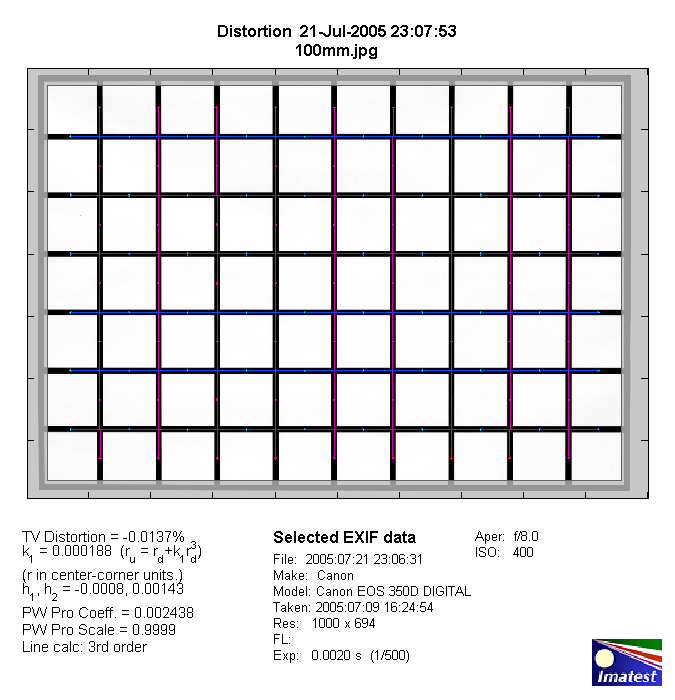|
Canon EF 100-400mm f/4.5-5.6 USM L IS - Review / Test Report - Analysis |
|
Lens Reviews -
Canon EOS (APS-C)
|
|
Page 2 of 3

Distortion
Distortion is very well controlled with this lens.
At 100mm there is virtually undetectable barrel distortion switching to slight
pincushion distortion from 200mm and up. The effect is usually not field-relevant.
|
Move the mouse cursor over the focal length text marks below to observe the respective distortion
|
| 100mm |
200mm |
300mm |
400mm |
|

|
The chart above has a real-world size of about 120x80cm.
Vignetting
Thanks to the sweet spot effect the EF 100-400mm f/4.5-5.6 USM L IS showed only
marginal vignetting on the EOS 350D. In the field this should be pretty much
negligible.

MTF (resolution & chromatic aberrations)
Two lenses have been tested - the first one showed a rather mediocre quality
whereas the second one (its results are shown below) performed pretty much
according to the "consensus".
The lens exhibits a very even performance throughout the zoom range. At 100mm
the resolution figures are very good straight from f/4.5 and increase to
excellent results by f/8. Unsurprisingly there's a slight decrease in performance
towards 400mm where the quality is still on a very good level.
Please note that the MTF results are not directly comparable across the different systems!
Below is a simplified summary of the formal findings. The chart shows line widths per picture height (LW/PH) which can be taken as a measure for sharpness.
If you want to know more about the MTF50 figures you may check out the corresponding Imatest Explanations
Chromatic Aberrations (CAs)
The EF 100-400mm f/4.5-5.6 USM L IS shows only marginal lateral CAs which
are generally not field relevant. Purple fringing doesn't seem to be a
problem either.

Flare can be a problem with this lens so using the supplied hood or some other kind
of protection is a good idea (the hood of the EF 24-70mm L fits as well, BTW).
Strong light sources within the image will usually
produce some ghostings and a reduction of contrast - a complex design with several
lens elements has limits here.
Due to the small max. aperture the out-of-focus blur is quite underdeveloped when facing small object magnifications.
Nonetheless you can achieve a small depth-of-field using a long focal length in conjunction with a close object distance.
The quality of the achievable bokeh is quite decent.
|